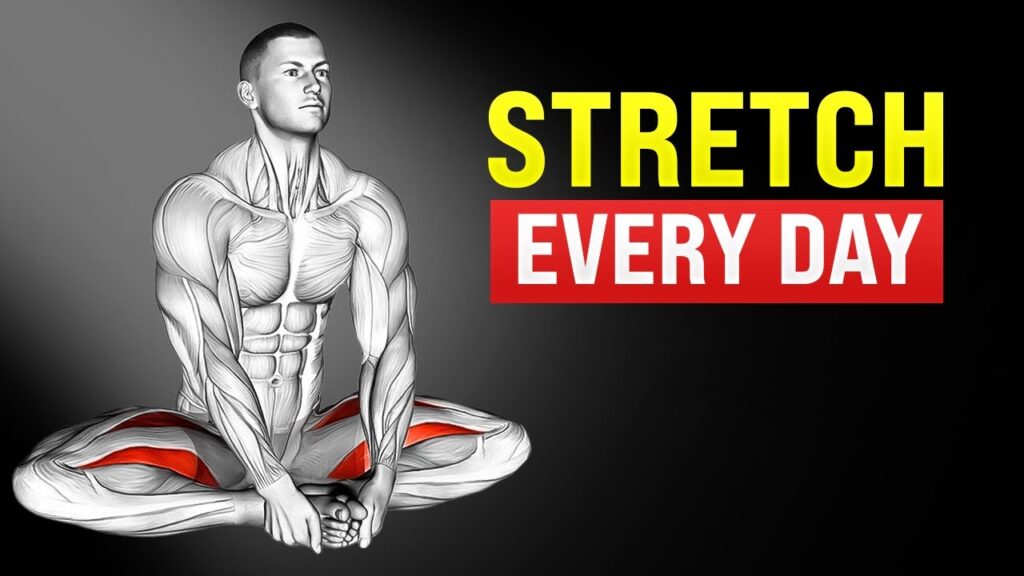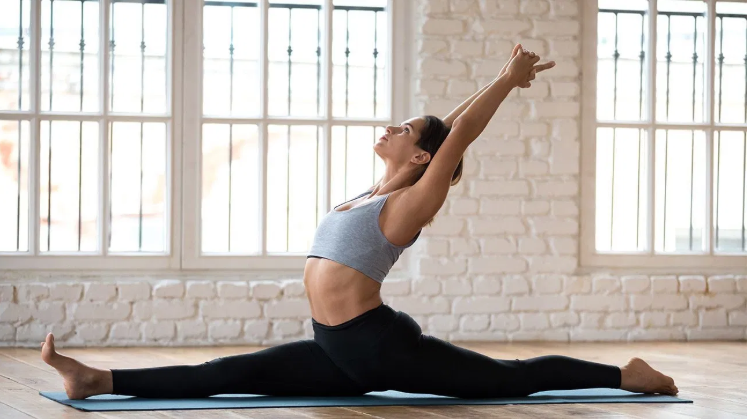In una routine di fitness impegnativa, lo stretching viene spesso saltato a causa dei limiti di tempo. Tuttavia, solo 10 minuti di stretching quotidiano possono migliorare il sonno, la chiarezza mentale, la flessibilità e rendere più facili altri esercizi.
L’importanza di fare stretching ogni giorno
- Physical Transformations: Stretching increases flexibility, prevents injuries, improves posture, and elongates muscles.
- Mental Benefits: Beyond physical changes, stretching relaxes the mind, centers breathing, and promotes peaceful sleep.
- Variety in Stretching: Certified personal trainer Ronny Garcia suggests trying variations like static and dynamic stretching.
- Dynamic Stretching: Involves movement, using muscles to bring about a stretch. For example, a walking lunge extends the range of motion for better hip flexor and calf stretch.
- Static Stretching: Involves holding a pose without movement, commonly seen in yoga or post-cardio sessions.
Benefici dello stretching quotidiano
Incorporare una routine di stretching, anche in soli 10 minuti al giorno, può offrire potenti benefici per la salute. Alcuni di questi includono la mitigazione del dolore cronico, il miglioramento della gamma di movimento e la riduzione della rigidità articolare. Ecco alcuni dei potenziali benefici che potresti riscontrare durante lo stretching quotidiano.
Aumenta la flessibilità e riduce la produzione muscolare
- Improved Joint Stiffness: Stretching enhances joint flexibility, reducing stiffness and lowering the risk of muscle imbalances.
- Study Findings: In a recent study using a goniometer and workout equipment, participants who performed stretching exercises showed a significant increase in flexibility compared to the control group.
- Easier General Movement: Increased flexibility from stretching makes everyday movements more manageable.
Contrasta l’inattività
- Busy Schedule Solution: For those with hectic work hours or challenging exercise schedules, just 10 minutes of daily stretching can be highly beneficial.
- Study Results: Research on participants with reduced physical activity showed that a daily 10-minute stretching routine countered performance declines.
- Morning Routine: Incorporating a 10-minute stretching routine, especially with yoga moves, in the morning can increase blood flow and set a positive mindset for the day.
Migliora il dolore cronico
- Pain Relief through Stretching: A randomized control trial with nearly 100 office workers showed that a four-week stretching program reduced neck and shoulder pain.
- Improved Function and Quality of Life: Participants reported not only decreased pain but also improved neck function and an overall better quality of life.
Ha un impatto positivo sulla forza e sulla potenza muscolare
- Stretching as a Time-Saving Alternative: If there’s no time for weight training, stretching can be a valuable alternative.
- Meta-Analysis Findings: A meta-analysis of studies on static stretching exercises revealed that, regardless of age, gender, or physical activity status, static stretching has the potential to improve muscle strength and power.
Rischi e considerazioni
Anche se lo stretching offre benefici fisici e mentali, è necessario essere consapevoli del fatto che comporta una serie di rischi intrinseci. Ecco alcune considerazioni per aiutarti a evitare il più possibile infortuni.
È difficile rimanere impegnati
I ricercatori di Harvard Health affermano che lo stretching ogni giorno non perfezionerà la tua flessibilità: lo stretching non è uno strumento magico per una flessibilità immediata. Piuttosto, devi continuare a praticarlo. Hai sviluppato articolazioni tese nel tempo e anche allungarle richiederà tempo.
Potrebbe causare lesioni
- Safe Stretching Practices: When holding a stretch, avoid bouncing to prevent injury. Stretch until you feel tension, not pain. Cease stretching if any pain arises, and consult a healthcare provider if it persists.
- Chronic Pain or Disabilities: Individuals with chronic pain or disabilities should consult a healthcare provider to determine suitable stretches and levels of physical activity for their specific needs.
Devi conoscere i tuoi limiti
Secondo una revisione sistematica del Journal of Sports Science & Medicine, lo stretching eccessivo può avere conseguenze, che includono rigidità nervosa e deformazione nervosa. Inizia con allungamenti facili, come una routine di stretching attivo di 10 minuti, per aiutare a mitigare tali problemi nervosi. Puoi sviluppare la tolleranza nel tempo e i tuoi nervi si adatteranno allo stretching.
Personalizzare l’obiettivo per allungare ogni giorno
Se sei nuovo nello stretching, vuoi mantenere i tuoi obiettivi a portata di mano. Inoltre, per chiunque abbia prenotazioni, potresti prendere in considerazione la possibilità di consultare un professionista del fitness per sviluppare una routine efficace su misura per il tuo corpo.
Dovresti anche seguire le migliori pratiche di stretching che ti aiutano a rimanere coerente e senza infortuni. Ciò include quanto segue:
- Warm up for 5 to 10 minutes with active stretching to get the blood flowing and prepare
your muscles for static, deep stretching. - Stop if you feel pain.
- Target different muscle groups to get a good overall body stretch.
- Take slow, deep breaths. (Breathing out as you stretch can help you bend deeper.)
- Avoid comparing yourself to others. You are on your own journey and everyone is
different. - Know that some people are naturally flexible or have been developing their flexibility throughout their lives.
Strategie per incorporare lo stretching nella tua giornata
L’aggiunta di stretching alla tua routine quotidiana può avvantaggiarti in modi incommensurabili. Ad esempio, la maggiore flessibilità che deriva dallo stretching costante può aiutarti a liberarti dal dolore cronico. Ecco alcuni consigli dei professionisti del fitness su come incorporare lo stretching nella tua routine quotidiana.
Tieni traccia dei tuoi progressi
Josh Weight, fisioterapista sportivo e direttore di Gravity Physio, afferma che avere un modo tangibile per vedere i progressi aiuta con la motivazione. Consiglia di impostare un modo per misurare la lunghezza dei muscoli posteriori della coscia, come una casella di seduta e portata che controlli settimanalmente per vedere il tuo miglioramento.
Abbinalo alle attività che ti piacciono
- Incorporate Stretching into Daily Habits: To make daily stretching a habit, pair it with activities you already do regularly.
- Examples: Stretch while brushing your teeth or brew coffee, integrating a quick stretching routine into your daily routine.
Incorpora le pause di stretching nel tuo programma
Do you work from home? Try setting alarms or putting reminders on your email calendar throughout the day to take short stretch breaks, Weight says. “Even a couple of minutes every hour can make a significant difference.”
Usa le scale
- Stair Stretching Tip: Certified personal trainer Lauren Wellinger suggests using stairs not only for calorie burn but also for stretching.
- Calf Stretch: While on the stairs, step back so the heels are off the step. Push down on one heel, holding for 30 seconds, then switch feet.
Usa segnali visivi
- Combat Forgetfulness: To remember to stretch, place sticky notes or visual cues around your workspace or home.
- Example Reminder: Consider a note on your mirror for a reminder while brushing your teeth.
Rilassati prima di andare a letto
- Nighttime Stretching Routine: Certified personal trainer Jeremiah Shaw suggests a gentle stretching routine before bed to reduce muscle tension and promote relaxation.
- Daily Benefits: Regular stretching offers both physical and mental benefits, including reduced body pain and tension, improved mental clarity, increased range of motion, and relief from joint stiffness.
- Achieve Your Goals: Whether aiming for better sleep or more advanced flexibility, dedicating time to daily stretching can make a positive difference. Consult with a healthcare provider if you experience any pain during your stretching routine.


